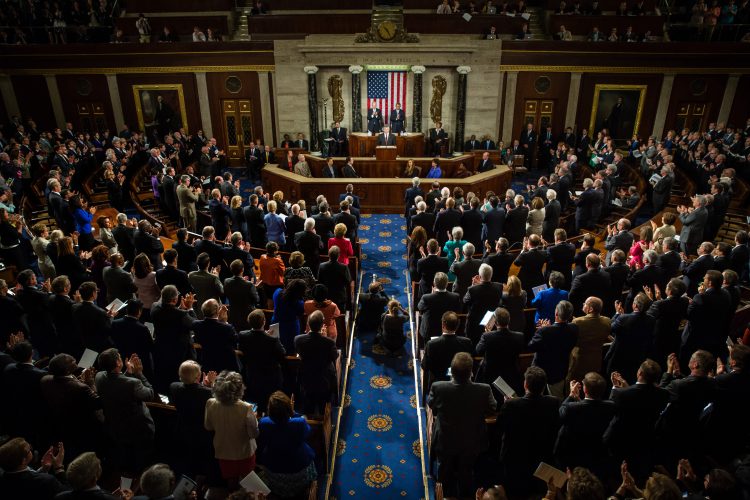US pandemic assistance programmes fed nearly 30 million children
- Like
- Digg
- Del
- Tumblr
- VKontakte
- Buffer
- Love This
- Odnoklassniki
- Meneame
- Blogger
- Amazon
- Yahoo Mail
- Gmail
- AOL
- Newsvine
- HackerNews
- Evernote
- MySpace
- Mail.ru
- Viadeo
- Line
- Comments
- Yummly
- SMS
- Viber
- Telegram
- Subscribe
- Skype
- Facebook Messenger
- Kakao
- LiveJournal
- Yammer
- Edgar
- Fintel
- Mix
- Instapaper
- Copy Link
Posted: 14 September 2022 | New Food | No comments yet
New research has suggested that child nutrition interventions during the pandemic were very effective, adding weight to calls for more permanent solutions.


A new bill is in front of the House of Representatives which would see more permanent assistance programmes introduced
When schools closed during the first year of the pandemic, many were rightly concerned about the impact the disruption would have on children’s education. But a more immediate and dangerous problem also emerged: how would families who depend on school meals get access to the nutrition they needed?
US Congress responded by authorising the Department of Agriculture to roll out two major programmes. It launched “grab and go school meals,” which helped schools provide prepared meals for off-site consumption and distributed funding for the state-operated Pandemic EBT (P-EBT) programme, which gave parents debit cards so they could purchase groceries from food retailers.
A new study led by the Harvard and University of Washington schools of public health found that the programmes reached more than 30 million children and either directly provided meals or, through the P-EBT program, cash for nearly 1.5 billion meals a month in 2020.
Feeding America calls for industry action with food bank usage up
Researchers found that the P-EBT program reached 26.9 million of the 30 million children whose families qualified because of low income at a cost of $6.46 per meal, providing access to 1.1 billion meals a month.
In addition, the grab-and-go programme reached eight million children not eligible for P-EBT at a cost of $8.07 per meal, providing 429 million meals a month.
“When schools had to close across the country during the spring of 2020 due to COVID-19, kids all of a sudden lost access to school lunches and breakfasts. From a public health and nutrition security perspective, this was an urgent concern, given that these meals are critical for students at risk of food insecurity and are also an essential source of nutrition for millions of children,” said Erica Kenney, study lead author and assistant professor of public health nutrition at Harvard.
Kenney said when these programmes began, no one really knew how effectively they would reach kids who needed them and at what cost per meal. So the researchers set out to try to answer how these two major policy responses to the loss of regular school meal access worked.
“This study suggests that, in many states, P-EBT can reach the most eligible children at relatively low cost to the government, while a meal distribution model such as grab-and-go school meals can also ensure families directly receive meals and reach children beyond those who are P-EBT-eligible,” said James Krieger, senior author and clinical professor of health systems and population health in the UW School of Public Health.
The research comes as extensions to these key programmes are being debated on Capitol Hill. The “Healthy Meals, Healthy Kids Act” was introduced to the House earlier this year by Rep. Robert C Scott (D-VA), and if passed will see the EBT scheme continued each summer so parents can have access to funded meals when their children are not in school.
“The act proposes a comprehensive, science-driven reauthorization of federal child nutrition programs that meets the needs of children and families. It includes many familiar and essential programs, such as school meals and the WIC program. It would address food insecurity among children during the summer, when schools are closed, by significantly expanding access to summer meals and creating a nationwide Summer-EBT program,” said Krieger.
“An important takeaway from our study that may be relevant for the conversation about the Healthy Meals, Healthy Kids Act is that these should be considered together, as a two-pronged strategy. The two approaches complement one another: P-EBT can help make sure that at least the cash value of those missed meals can get out to low-income families efficiently, and grab-and-go meals can ensure that families who may be struggling but may not have a low-enough income to qualify for P-EBT can still get meals. They can also ensure that families who may have more difficulty preparing food — like families experiencing homelessness or with limited kitchen facilities, or even just with limited time — can access nutritionally adequate meals,” added Kenney.
The bill passed the House Education and Labor Committee in July 2022 along party lines, so question marks remain as to whether it will pass both houses and be signed into law by President Biden.








